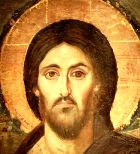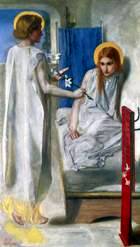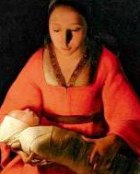Young people in the gospels
Questions for Bible study groups
- Choose one of the young people described below (but not Jesus of Nazareth), and jot down all you can find out about them from the gospels.
- Using this information, write a short biography of that person.
- What could you learn from them and their story?
Jesus of Nazareth
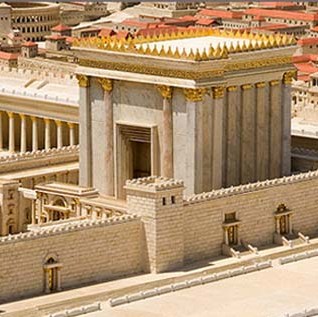
Mary and Joseph of Nazareth would have been frantic with anxiety when they lost their 12-year-old son Jesus. Though he was now legally a man, he was still to them just their boy who had gone missing in an over-crowded city. They must have been distraught.Reconstruction of the 1st century Temple in Jerusalem, built by King Herod the Great but not completed at the time of Jesus’ death
Jesus, however, knew that he was destined to be more than a carpenter in Galilee. Not yet a grown man, he realized he had a mission that would change the world.
That sense of purpose is something we’d all like to have. If you can, try to work out where you want to go with your own life.
- What do you want to achieve?
- What should you do to achieve these aims?
- How do you turn your ideals into solid, practical reality?
- Look for opportunities, and don’t throw them away.
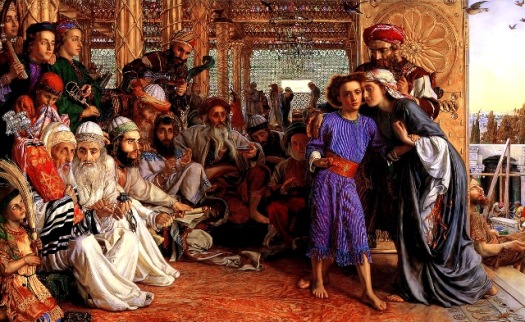
Finding the Savior in the Temple, John Holman Hunt
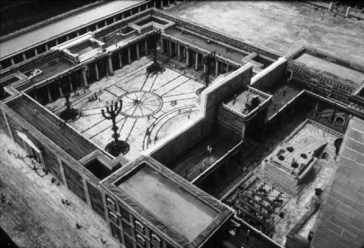 Gospel text of the story
Gospel text of the story
‘When they (Mary and Joseph) had finished everything required by the law of the Lord, they returned to Galilee, to their own town of Nazareth. The child grew and became strong, filled with wisdom; and the favor of God was upon him.
Now every year his parents went to Jerusalem for the festival of the Passover. And when he was twelve years old, they went up as usual for the festival. When the festival was ended and they started to return, the boy Jesus stayed behind in Jerusalem, but his parents did not know it. Assuming that he was in the group of travelers, they went a day’s journey. Then they started to look for him among their relatives and friends.
There were Temple schools for young men; these were held in the colonnades at the edges of the courtyard When they did not find him, they returned to Jerusalem to search for him. After three days they found him in the Temple, sitting among the teachers, listening to them and asking them questions. And all who heard him were amazed at his understanding and his answers. When his parents saw him they were astonished; and his mother said to him “Child, why have you treated us like this? Look, your father and I have been searching for you in great anxiety.”
He said to them “Why were you searching for me? Did you now know that I must be in my Father’s house?” But they did not understand what he said to them. Then he went down with them and came to Nazareth, and was obedient to them. His mother treasured all these things in her heart. And Jesus increased in wisdom and in years, and in divine and human favor.’ Luke 2:39-52
For more on this story, go to The Lost Boy
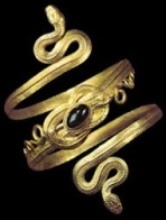 Salome
Salome
Ancient gold bracelet in the form of a snake Salome’s lurid image as an under-age seductress did not come from the gospels. It was developed in the 19th century, from the fevered imaginations of artists and writers like Aubrey Beardsley, Oscar Wilde and Richard Strauss. There was very little historical reality in their image of this 1st century Jewish princess. So try to put that aside.
Look at the bare bones of her story. What was this young girl trying to do? She was trying to save her mother Herodias from anyone (like John the Baptist) who seemed to be a political agitator. No child likes to see their parent being attacked, especially by an outsider.
Salome sinned because she put her loyalty to her mother above her sense of right and wrong. Family loyalty is worthwhile, but only when it does not clash with real morality.

Salome, V. Surenyants, 1907
Gospel text of the story
‘Herod had arrested John, bound him, and put him in prison on account of Herodias, his brother Philip’s wife, because John had been telling him, “It is not lawful for you to have her.” Though Herod wanted to put him to death, he feared the crowd because they regarded him as a prophet.
But when Herod’s birthday came, the daughter of Herodias danced before the company, and she pleased Herod so much that he promised on oath to grant her whatever she might ask. Prompted by her mother, she said “Give me the head of John the Baptist here on a platter.”
The king was grieved, yet out of regard for his oaths and for the guests, he commanded it to be given; he sent and had John beheaded in the prison. The head was brought on a platter and given to the girl, who brought it to her mother.’ Matthew 14:3-11
Mary of Nazareth
Mary of Nazareth has become such a venerated figure that it is hard to imagine her as a young girl who found herself pregnant in a society that demanded virginity in every unmarried girl.
As far as the people around her were concerned, Mary was pregnant to some man who was not her promised husband, Joseph. Outrage and hostility would have been directed at her from all sides.
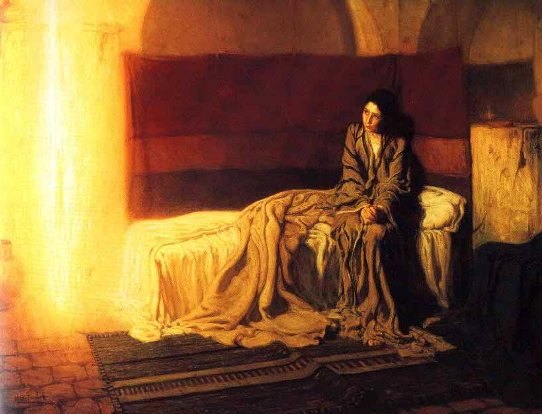
The Annunciation, Howard Tanner
Faced with this situation, Mary did two things:
- she wholeheartedly accepted God’s will, placing her faith in God’s ultimate wisdom
- she removed herself from the distressing situation in her native town, and went instead to visit her sympathetic older cousin, Elizabeth.
She accepted that God had a plan for her, even though she might not be able to understand it, and placed herself under the guidance of a sensible older person.
The lesson? God’s plan is often difficult to fathom, but we should accept it and trust in his ultimate wisdom – and not be too proud to listen to the advice of a sensible, older person who is willing to help.
Gospel text of the story
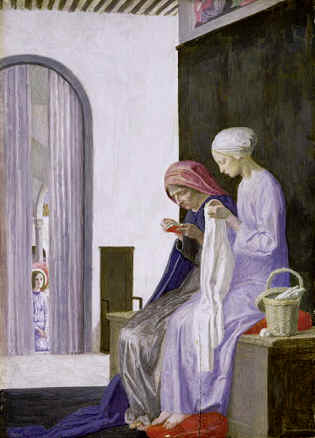 ‘In the sixth month the angel Gabriel was sent by God to a town in Galilee called Nazareth, to a virgin engaged to a man whose name was Joseph, of the house of David. The virgin’s name was Mary.
‘In the sixth month the angel Gabriel was sent by God to a town in Galilee called Nazareth, to a virgin engaged to a man whose name was Joseph, of the house of David. The virgin’s name was Mary.
And he came to her and said “Greetings, favored one! The Lord is with you.” But she was much perplexed by his words and pondered what sort of greeting this might be. The angel said to her “Do not be afraid, Mary, for you have found favor with God. And now you will conceived in your womb and bear a son, and you will name him Jesus. He will be great, and will be called the Son of the Most High.”
Mary said to the angel “How can this be, since I am a virgin?” The angel said to her “The Holy Spirit will come upon you, and the power of the Most High will overshadow you; therefore the child to be Robert Anning Bell: the Visitation, Mary and her cousin Elizabeth born will be holy; he will be called Son of God. And now your relative Elizabeth in her old age has also conceived a son; and this is the sixth month for her who was said to be barren. For nothing will be impossible with God.”
Then Mary said “Here am I, the servant of the Lord; let it be with me according to your word.” Then the angel departed from her.
In those days Mary set out and went with haste to a Judean town in the hill country, where she entered the house of Zechariah and greeted Elizabeth. When Elizabeth heard Mary’s greeting, the child leaped in her womb. And Elizabeth was filled with the Holy Spirit and exclaimed with a out cry “Blessed are you among women, and blessed is the fruit of your womb.
And Mary remained with her about three months and then returned home.’
Luke 1:26-42, 56
John the apostle
John came from an ordinary background: his father and brothers were fishermen, and he expected to go into the family business. But one day he met Jesus, and that changed everything. John was just a young man, but the charismatic teacher from Galilee called him to follow, and he downed tools and went without a backwards glance.
 According to tradition, he was hardly more than a boy at the time. He was quick-tempered and impulsive – Jesus called him and his older brother James the ‘sons of thunder’ because of their tempers. Despite this, or maybe because of it, Jesus loved and trusted him.
According to tradition, he was hardly more than a boy at the time. He was quick-tempered and impulsive – Jesus called him and his older brother James the ‘sons of thunder’ because of their tempers. Despite this, or maybe because of it, Jesus loved and trusted him.
John was present at some of the key moments in Jesus’ life
- he saw Jesus bring Jairus’ daughter back to life
- he saw whatever it was that mysteriously happened at the Transfiguration
- he sat beside Jesus at the Last Supper
- he was standing in the dark shadows when the soldiers came for Jesus in the Garden of Gethsemane
- he stood near the foot of the cross as Jesus died in horrifying agony, the only one of Jesus’ friends who did not desert him
- in response, Jesus entrusted his young friend with the care of his mother Mary.
After Jesus died, John became one of the main leaders of the early Christian church. He may have been the author of John’s Gospel; if so, he was a poet and a man of brilliant intellect.
What message can we take from his story? Knowledge of Jesus and his teachings, and acceptance of them, can transform an ordinary life into something quite extraordinary.
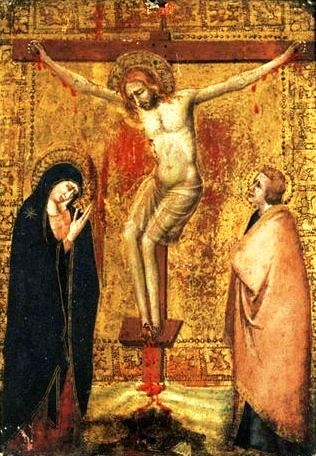
Gospel text
‘As he walked by the sea of Galilee, Jesus saw two brothers, James son of Zebedee and his brother John, in the boat with their father, mending their nets, and he called them “Follow me, and I will make you fish for people.” Immediately they left the boat and their father, and followed him.’ Matthew 4:18-22
‘Meanwhile, standing near the cross of Jesus were his mother, and his mother’s sister, Mary the wife of Clopas, and Mary Magdalene. When Jesus saw his mother and the disciple whom he loved standing beside her, he said to his mother, “Woman here is your son.” Then he said to the disciple “Here is your mother.” And from that hour the disciple took her into his own home.’ John 19:25-27
Jairus’ daughter
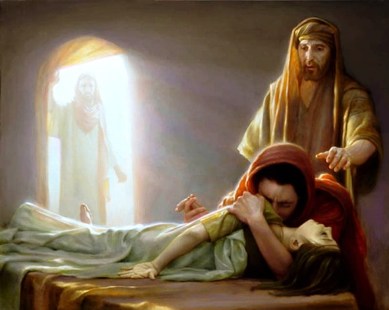 Whenever you look up a Commentary on the raising of Jairus’ daughter, the writer describes Jesus and Jairus but not the young girl in the story. And yet surely this must have been the most extraordinary experience of her life. She was dead, and then she was alive again.
Whenever you look up a Commentary on the raising of Jairus’ daughter, the writer describes Jesus and Jairus but not the young girl in the story. And yet surely this must have been the most extraordinary experience of her life. She was dead, and then she was alive again.
Was she an only child? Or were there brothers and sisters in the background, praying for a miracle, seeing their sister die, then watching as a miracle really did take place before their eyes?
The story encourages us to think about our own spiritual health:
- Are we as good as dead in our hearts?
- ‘Dead without even realizing we have died?
- Do we need the message of Jesus to restore us to life?
- Does Jesus extend the gift of life to us, as he did to this girl?
- And do we accept it?
When you read the gospel story, don’t miss the final sentence. It shows a side of Jesus that is usually ignored – his good common sense. Even in the midst of the hullabaloo, Jesus still recognized that the now-healthy girl was probably hungry, and needed something to eat.
Gospel text of the story
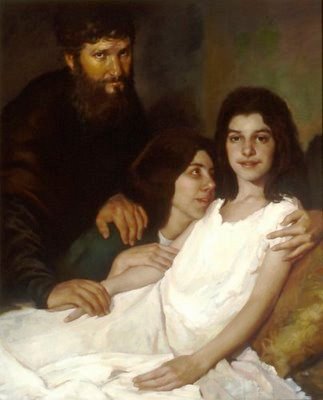 ‘Then one of the leaders of the synagogue named Jairus came and, when he saw Jesus, fell at his feet and begged him repeatedly “My little daughter is at the point of death. Come and lay your hands on her, so that she may be made well, and live.” So he went with him…..
‘Then one of the leaders of the synagogue named Jairus came and, when he saw Jesus, fell at his feet and begged him repeatedly “My little daughter is at the point of death. Come and lay your hands on her, so that she may be made well, and live.” So he went with him…..
While Jesus was still speaking, some people came from the leader’s house to say “Your daughter is dead. Why trouble the teacher any further?” But overhearing what they said, Jesus said to the leader of the synagogue “Do not fear, only believe.”
He allowed no one to follow him except Peter, James and John, the brother of James.
When they came to the house of the leader of the synagogue, he saw a commotion, people weeping and wailing loudly. When he had entered, he said to them “Why do you make a commotion and weep? The child is not dead but sleeping.” And they laughed at him.
Then he put them all outside, and took the child’s father and mother and those who were with him, and went in where the child was.
He took her by the hand and said to her “Talitha cum” which means, “Little girl, get up!”
And immediately the girl got up and began to walk about (she was twelve years of age). At this they were overcome with amazement. He told them to give her something to eat.’
Mark 5:22-43

